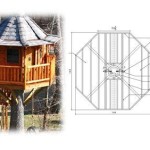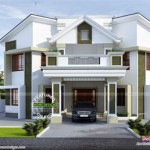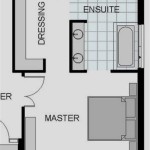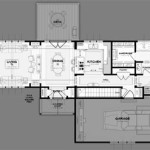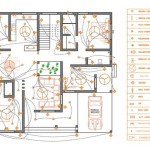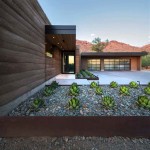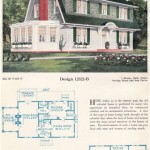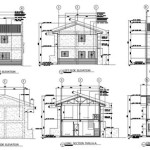Designing the American Dream: Exploring House Plans
The process of designing a house is a significant undertaking, representing a blend of practicality, aesthetics, and personal expression. For many, the "American Dream" includes owning a home tailored to their specific needs and desires. Understanding the intricacies of house plans is crucial to navigating this complex process and achieving the desired outcome. This article explores the key aspects of designing American house plans, offering insights into the factors that contribute to a successful design.
Key Considerations When Choosing a House Plan
Choosing the right house plan forms the foundation of the entire building process. Careful consideration of several factors ensures a design that is both functional and aesthetically pleasing. A well-chosen plan sets the stage for a comfortable and enjoyable living experience.
1.
Lifestyle Needs:
The design should reflect the occupants' lifestyle. A family with young children might prioritize a spacious play area, while a retired couple might prefer a single-story design for ease of access. Understanding how the space will be used is paramount.2.
Budget:
Establishing a realistic budget is essential before delving into design options. Construction costs, materials, and labor should be factored into the overall budget to avoid financial strain and ensure project completion.3.
Lot Size and Orientation:
The size and orientation of the building lot significantly influence the design. A sloped lot may require a specific foundation type, while a narrow lot might necessitate a multi-story design. Maximizing natural light and views should also be considered.4.
Local Building Codes:
Adherence to local building codes and regulations is mandatory. These codes dictate aspects such as setbacks, building height, and safety requirements. Consulting with local authorities ensures compliance and avoids potential legal issues.Architectural Styles for American Homes
American residential architecture showcases a diverse range of styles, each with its unique characteristics and historical influences. Selecting an architectural style is a crucial step in defining the overall aesthetic of the house.
1.
Ranch Style:
Known for their single-story layout and open floor plans, ranch-style homes offer convenient living and are ideal for families. Their simple design often incorporates large windows and attached garages.2.
Colonial Style:
Characterized by symmetrical facades, prominent entryways, and multi-paned windows, colonial-style homes evoke a sense of classic elegance. Variations include Georgian, Dutch Colonial, and Cape Cod styles.3.
Craftsman Style:
Emphasizing handcrafted details and natural materials, craftsman homes feature low-pitched roofs, exposed beams, and built-in cabinetry. These homes often prioritize functionality and connection with the surrounding environment.4.
Modern Style:
Clean lines, geometric shapes, and large expanses of glass define modern architecture. These homes prioritize open floor plans and often incorporate sustainable design elements.5.
Victorian Style:
Ornate details, intricate woodwork, and steeply pitched roofs are hallmarks of Victorian-style homes. These houses often feature bay windows, turrets, and decorative gables, reflecting a romantic and elaborate aesthetic.Optimizing Space and Functionality in House Plans
Creating a functional and well-organized living space is a primary goal in house plan design. Thoughtful space planning enhances the flow and usability of the home, contributing to a more comfortable and efficient living experience.
1.
Open Floor Plans:
Combining living, dining, and kitchen areas into a single open space promotes a sense of spaciousness and encourages interaction. This layout is particularly popular in modern and contemporary designs.2.
Efficient Traffic Flow:
Designing clear and unobstructed pathways throughout the house improves circulation and prevents bottlenecks. Consider the placement of doorways, hallways, and furniture to ensure smooth movement between rooms.3.
Storage Solutions:
Incorporating ample storage space is crucial for maintaining an organized and clutter-free environment. Built-in closets, pantries, and shelving units maximize storage capacity without sacrificing valuable living space.4.
Natural Light and Ventilation:
Maximizing natural light and ventilation improves indoor air quality and creates a brighter, more inviting atmosphere. Strategically placed windows, skylights, and operable windows enhance these elements.5.
Outdoor Living Spaces:
Extending the living space outdoors creates additional areas for relaxation and entertainment. Patios, decks, and balconies provide opportunities to connect with nature and enjoy the surrounding environment.Working with Professionals in the Design Process
Collaborating with experienced professionals is highly recommended throughout the design and construction process. Their expertise ensures a well-executed project that meets all requirements and adheres to industry best practices.
1.
Architects:
Architects provide design expertise, create detailed drawings, and oversee the project from conception to completion. They ensure the design aligns with the homeowner's vision and meets all structural and aesthetic requirements.2.
Builders:
Builders manage the construction process, coordinating subcontractors and ensuring the project is completed on time and within budget. Their experience in construction techniques and materials ensures a high-quality build.3.
Interior Designers:
Interior designers assist with selecting finishes, furniture, and décor to create a cohesive and aesthetically pleasing interior. They consider factors such as color palettes, lighting, and furniture placement to enhance the overall design.The Importance of Sustainability in Modern House Plans
Incorporating sustainable design principles into house plans is increasingly important in modern construction. These practices minimize environmental impact and contribute to a healthier, more energy-efficient home.
1.
Energy-Efficient Appliances and Systems:
Using energy-efficient appliances, HVAC systems, and insulation reduces energy consumption and lowers utility costs. These features also contribute to a smaller carbon footprint.2.
Water Conservation Measures:
Implementing water-saving fixtures and landscaping practices conserves water resources and reduces water bills. These measures include low-flow toilets, drought-tolerant landscaping, and rainwater harvesting systems.3.
Sustainable Building Materials:
Using eco-friendly building materials, such as recycled or sustainably sourced lumber and low-VOC paints, minimizes environmental impact and promotes healthier indoor air quality.Adapting House Plans for Aging in Place
Designing a home that accommodates the changing needs of its occupants over time is essential for long-term comfort and accessibility. Adapting house plans for aging in place ensures the home remains functional and safe as residents age.
1.
Single-Story Living:
Single-story designs eliminate the need for stairs, making navigation easier and safer for older adults. This design choice minimizes the risk of falls and improves accessibility.2.
Wider Doorways and Hallways:
Wider doorways and hallways accommodate wheelchairs and other mobility aids, ensuring easy movement throughout the house. These features enhance accessibility and improve safety for individuals with mobility limitations.3.
Grab Bars and Handrails:
Installing grab bars in bathrooms and handrails along hallways and stairways provides added support and stability, reducing the risk of falls. These safety features are essential for maintaining independence and safety in the home.4.
Accessible Bathrooms and Kitchens:
Designing bathrooms and kitchens with accessible features, such as roll-in showers, lowered countertops, and adjustable shelving, ensures ease of use and promotes independence for individuals with mobility limitations.
Design America Presents One Story House Plans And More

Best Ing House Plans Updated Revised 5th Edition By Design America Inc Paperback Target

Big Book Of Small Home Plans 2nd Edition By Design America Inc Paperback Target

Design America Presents Luxury Home Plans House And More

Ultimate Book Of Modern Farmhouse Plans By Design America Inc Paperback Target

The Big Book Of Small Home Plans Over 360 Under 1200 Square Feet By Design America Inc 2024 Trade Paperback For

Ultimate Waterfront Home Plans By Design America Inc Paperback Target

Big Book Of Small Home Plans Over 360 By Design America Inc 9781580118699

Design America Presents Modern Farmhouse Over 125 Popular Home Plans Inc 9781586780111 Abebooks

Architectural Designs New America House Plan 14674rk Gives You 4 Bedrooms 3 5 Baths And 2 500 Sq Ft Plus Plans Farmhouse

